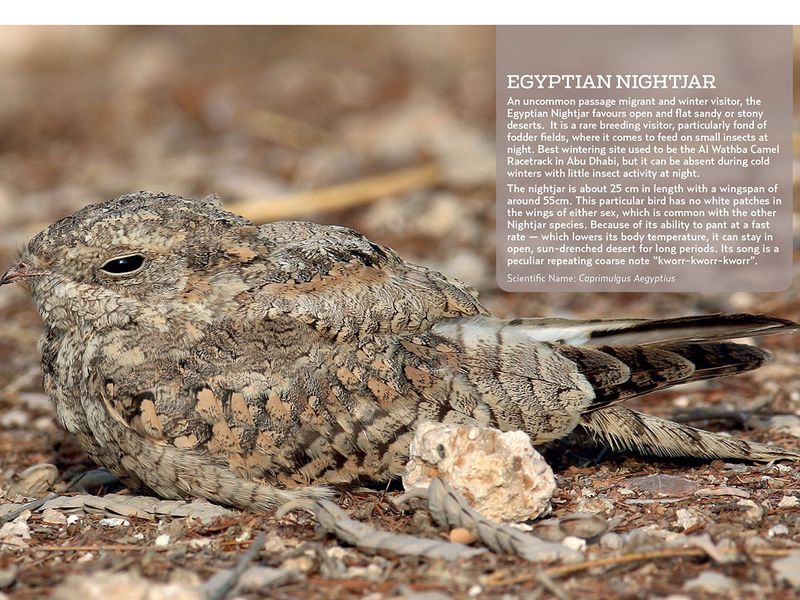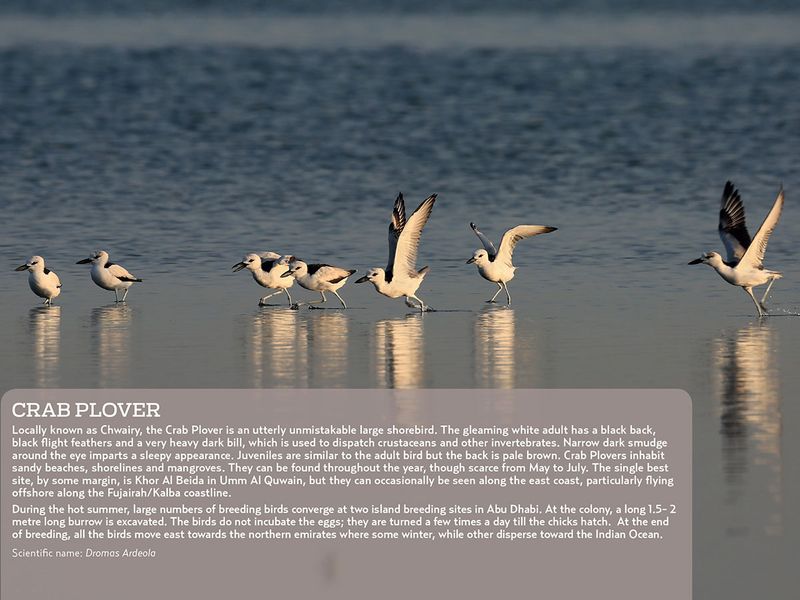Dubai: A brilliant new 2021 calendar featuring ‘Birds in the UAE’ is now out, featuring both the rare and the common, the resident and the visiting species in vivid colour, with key insights and must-have information on these majestic winged creatures.
Curated by locally-based birdlife experts, the calendar, published by Gulf News, showcases 14 birds that can be spotted in the Emirates – in razor-sharp photographs capturing the birds’ sunlit colourful bodies set against the soft blur of the background.
Intriguing facts
Apart from scientific information about the birds, such as their type, habitat and other essential facts, the calendar also reveals the best places and times to spot the birds and little-known trivia. Did you know, for example, that if you get too close to the Red-wattled Lapwing, one of the easiest birds to identify across the UAE, it sounds like it’s repeatedly saying, “Did he do it”, as it flies around you?

Image Credit: Courtesy: Stewart Kirkcaldy
Though most city-dwellers here are barely aware of birds in the UAE (other than the falcon, which had the 2019 Gulf News calendar devoted to it, as the UAE’s national bird that is deeply rooted in Emirati culture) and while wildlife may not be the first thing that comes to mind when many foreigners think of the UAE, the country, in fact, has recorded more than 450 species of birds during the last 25 years or so. These include birds that call the UAE home, the seasonal arrivals, and the odd wanderer.
“The UAE is blessed with a wide variation of habitats, including marshes and mangroves that provide an abundant supply of food to these birds; and this is why we get to see many species of birds all over the Emirates,” notes the brand new Gulf News calendar 2021. The selection of birds and related information has been compiled with the courtesy of bird experts Tommy Pedersen, Stewart Kirkcaldy and the Emirates Bird Record Committee (EBRC).
Cross-county quest
In his quest for watching birds, Kirkcaldy, 50, has been “all over the place” in the UAE, from the east coast of Kalba and Fujairah to the mountain wadis at Masafi; Jabal Hafeet in Al Ain or Jabal Jais in Ras Al Khaimah; from the deserts of Abu Dhabi, Dubai and Sharjah to the mangroves of Umm Al Quwain and Ajman.

Image Credit: Courtesy: Stewart Kirkcaldy
The expat from Scotland has recorded 328 bird species in the UAE, but only 294 are really counted as the rest were introduced species. “300 is my magic number, I really want to reach that figure and I will get up at 4am to find a bird in Ras Al Khaimah at first light, so I can make it back to Dubai in time to start work at 8am. My colleagues and wife think I’m crazy,” said Kirkcaldy, who works in customer service.
Expert guidance
Kirkcaldy, who has now spent 16 years in the UAE, was always aware of the bird life here; however, he didn’t really start “seriously birdwatching” again until 2014, when Tommy Pedersen made him aware of eBird and the UAEBirding.com. This website is associated with the EBRC – a team of highly skilled individuals review reports on sightings and Pedersen, who also helped with the calendar, is on the committee. Speaking about his collaboration with Gulf News for the calendar, Kirkcaldy said: “It was exciting and I enjoyed being involved. The local birding community are very helpful here; and will generally contribute whenever they can.”
Going birding
Going bird watching, or birding, in the UAE is easier than you think, he said. Good places to start are public parks in all emirates; the desert areas like Al Qudra and Ras Al Khor government hides in Dubai; lagoons in Abu Dhabi; the various mountains across the UAE. These places all hold specific birds that you will only be find in these types of habitats. Also, the UAE sits close to three major migration flyways for more than 300 species of birds, most of which come from Europe and Central Asia to escape the harsh winter. From now until April is the winter migration period, but the UAE also gets some birds who actually appear in the blistering summer months (such as the Blue Cheeked Bee Eater and the Egyptian Nightjar), Kirkcaldy said. However, the best time to find migratory birds is between November and April. The Blue Cheeked Bee Eater is one of Kirkcaldy’s favourite birds. “I have so many favourites; Blue Cheeked Bee Eater and Crab Plover are spectacular, but the UAE has so many wonderful species, I’m lucky to be in such a great country with excellent diversity,” he said.

Image Credit: Shutterstock
‘Leave only footprints’
When asked about responsible birding, Kirkcaldy said: “Take nothing; and leave only footprints. Photographers can be a great asset to finding rare species, but also they can be a problem as they get carried away with getting ‘the perfect shot’. Good filed craft is essential or else the birdlife simply do not return, or move on elsewhere. We should all practise this; if your subject is visibly stressed or anxious with your presence, then you’re probably too close.”
Supporting conservation
Besides providing joy to so many people, birding also plays an important role in species conservation. “Our sightings and records are used by scientists for conservation purposes, we all use a fantastic website called eBird and it holds millions of data from all over the world. We encourage this as it is invaluable information. eBird also helps to keep all your records together, I cannot stress enough how invaluable this website is. It’s now also an app, so you have access to all that information in your hand while out enjoying birds in the field.”

Image Credit: Supplied
Kirkcaldy’s love for birds had begun much, much earlier than is arrival to the UAE. “I was about six or seven years old and I was on holiday in the Highlands of Scotland with my parents. I wanted a book so I could identify all the amazing birds that I saw – the rest is history!
“My wife Gail and I left Scotland 16 years ago, we’ve both worked in customer service in Dubai during that time. I have other interests like snorkelling. I’m also a huge F1 fan and volunteered as a Marshal at the F1 in Abu Dhabi in the past.”


